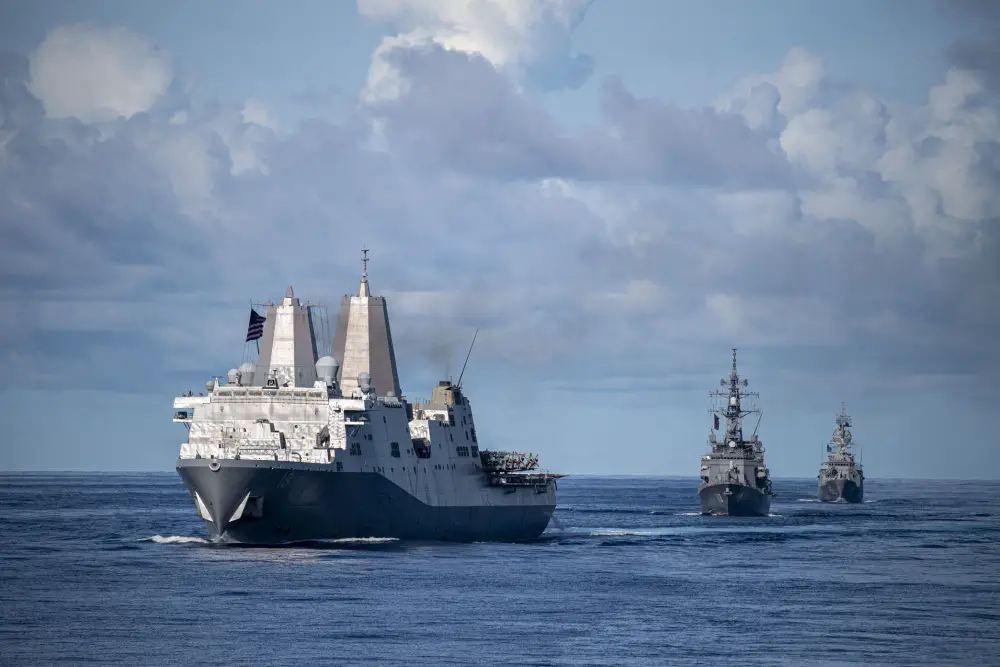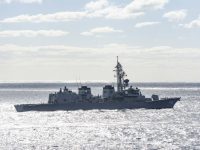Japan Maritime Self-Defense Force (JMSDF) destroyer JS Makinami (DD 112) took charge as Sea Combat Commander (SCC) during Combined and Joint Battle Problem (CJBP) Aug. 5-10 alongside the USS America (LHA 6) Expeditionary Strike Group and the Royal Australian Navy’s (RAN) HMAS Ballarat (FFH 155) and HMAS Canberra (L 02). CJBP is one of many operations nested under the U.S. Indo-Pacific Command’s Large Scale Global Exercise (LSGE) 21. LSGE 21 is global command-and-control exercise, with a regional focus, to enhance integration of the U.S., allies and partners in the Indo-Pacific region.
“This was a counterattack-style exercise between the JMSDF, the U.S. Navy and the Royal Australian Navy, and included practical, high-end situational training such as smooth communication in joint combat and joint anti-surface attacks, which enabled us to enhance our tactical skills and strengthen our joint operational capabilities with the participants,” said Capt. HIRAI Katsuhide, commanding officer of Escort Division 1. “I hope this joint training with the USN and RAN, which are strong partners in the realization of a free and open Indo-Pacific, will contribute to support stability in the region.”

Sea Combat Commander is a big responsibility for the surface navy, it’s all about giving clear guidance, understanding tactics and sharing a common operational picture. To achieve interoperable and interchangeable maritime forces, we must be able to operate bilaterally and in coalitions. Activating Makinami as the SCC allowed them to hone in on warfare commander skills and direct the ships through difficult maneuvering and formations. JS Makinami’s crew flawlessly executed duties as SCC, highlighting the capability that the U.S., with partners and allies, can shift command and control amongst the force in a complex operating environment.
Being able to come together and work from the same playbook under Makinami’s direction as SCC was very rewarding. Multi-national forces routinely operate across the region, ready to respond to the full spectrum of conflict and disaster. Exercises like these allow the U.S. operate in conjunction with an unmatched network of alliances and partnerships. USS America ESG and embarked elements of the 31st Marine Expeditionary unit are operating in the U.S. 7th Fleet area of responsibility to enhance interoperability with allies and partners, and serve as a ready response force in support of peace and stability in the Indo-Pacific region.
